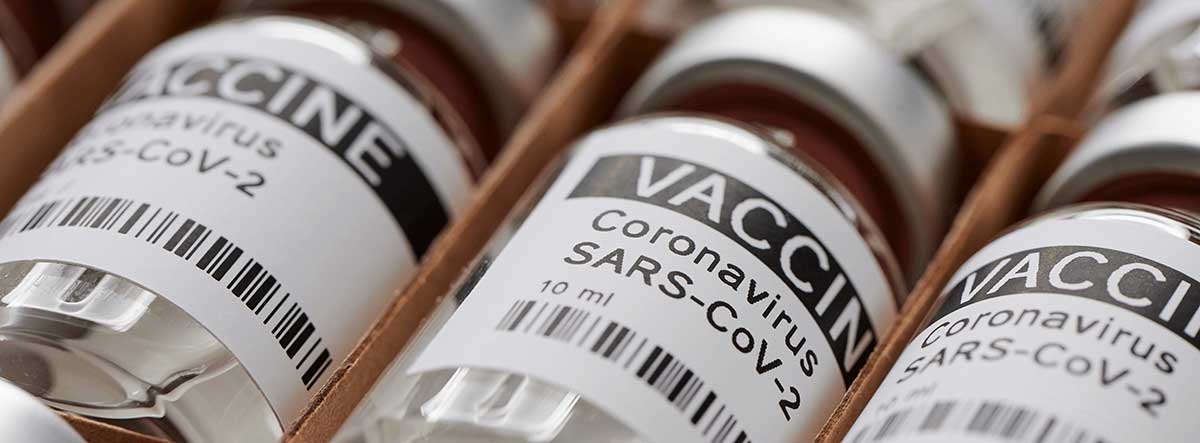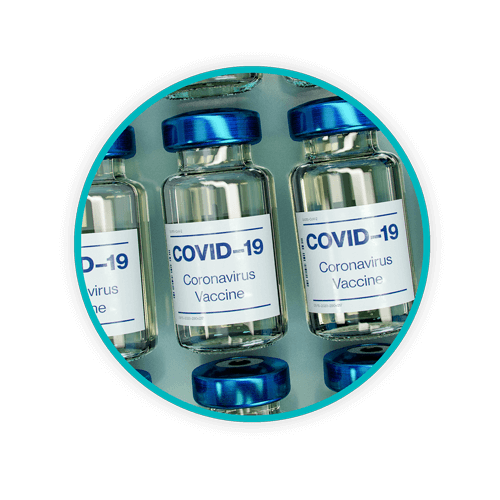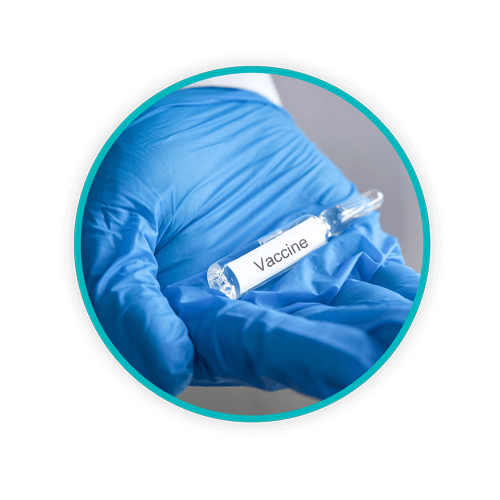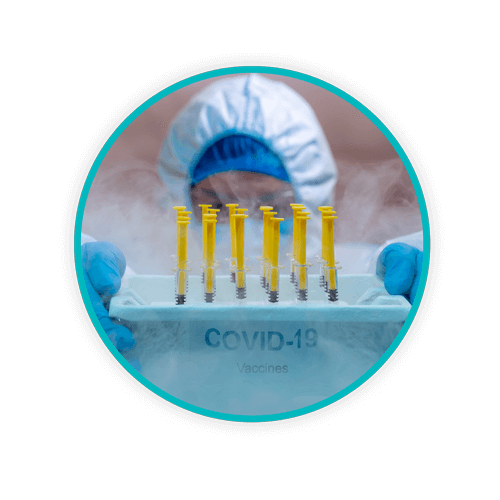COVID-19 Vaccine Waste Disposal Guidelines

COVID-19 vaccines are surging throughout Canada. Approximately half of Canadian residents have been vaccinated to date, with nearly 25 million doses administered as of early June 2021 and increasing on a daily basis. That’s millions of vials of vaccines, syringes, needles, and personal protective equipment for those delivering the vaccines - and being discarded following use. Where is all that vaccine waste going?
COVID-19 waste management is serious business. To help, Daniels Health Canada has put together a few resources, and tips for healthcare providers. Protect your staff, your patients, the general public, and the environment through complaint disposal procedures for your COVID-19 vaccine waste.
The following guidelines are generalized for Canada. Medical facilities and healthcare professionals should always refer to not only federal regulations, but provincial and local guidelines for COVID-19 waste disposal guidelines as well.
Talk to an expert about COVID-19 guidelines
TOPICS WE WILL COVER:
1 / COVID-19 Waste Disposal Reccomendations
2 / COVID-19 Disposal Guidelines
4 / Dry Ice Disposal Guidelines
Waste Disposal Recommendations for COVID-19 Vaccine Waste
Canadian regulations regarding healthcare safety and waste regulations are overseen by not only the federal Canadian government, but provincial Ministers of Health for each province and territory. The Canadian Centre for Occupational Health and Safety (CCOHS) provides tip and fact sheets for COVID-19 vaccine distribution centres and clinics. The Centers for Disease Control and Prevention (CDC) also makes general recommendations for COVID-19 vaccine waste, prepared by the CDC Vaccine Task Force, Distribution and Pharmacy.
Basic Guidelines for COVID-19 Vaccine Waste
Vials - All COVID-19 vaccines have limited shelf life. Any vial that goes beyond that date is to be disposed of as biomedical waste.
Syringes – A used syringe (full, partially empty, or empty) must be placed in a compliant sharps container and disposed of biomedical waste.
Needles – Needles are to be disposed of in a compliant sharps container.
Packaging – Any packaging for COVID-19 vaccines (containers or plastic sleeves for vials and trays and syringes) are to be disposed of as medical waste as long as it is empty.
About COVID-19 Vaccine Vials
Empty vials of several brands of COVID-19 vaccines currently used in Canada (Moderna, Pfiser-BioNTech, AstraZeneca, and Johnson & Johnson) are considered non-hazardous pharmaceutical waste because they do not contain any viral materials. In Canada, vials are to be discarded in biomedical waste containers and not sharps bins[1].
Empty COVID-19 vaccine vials can be stored in white or blue biomedical waste containers until disposed of through incineration. They are not to be autoclaved or disposed of in landfills.
Vaccine vial trays and the packaging of the vaccine vials must be discarded as biomedical waste. Refer to your local jurisdiction for regulations regarding disposal of biohazardous waste and instructions from the vaccine manufacturer in regard to disposal of low-temperature COVID-19 vials. Brand manufacturers of COVID-19 vaccines also provide guidance regarding disposal of products, including unused vaccine.
Disposal Guidelines for Dry Ice
Shipping and handling of dry ice for different brands of the COVID-19 vaccines are available from the manufacturer[2]. Always refer to a dry ice safety data sheet such as the example from Pfizer prior to unpacking the vaccine, or contact your local provincial health department for information.
Dry ice is frozen carbon dioxide and can reach temperatures of -78°C (-109°F). Primary hazards of dry ice are burns. However, in small spaces without adequate ventilation, asphyxiation is a real danger because of depletion of oxygen when dry ice is exposed to the air.
Dry ice doesn’t ‘melt’ but sublimates, meaning it transforms from a solid to a gas without liquefying. Take precautions before handling:
- Ensure proper ventilation
- Wear safety glasses with side shields
- Don waterproof and insulated gloves to prevent burns and frostbite
Dispose of dry ice by leaving it exposed at room temperature in a well-ventilated and secured area. Do not place it in a waste bin or toilet or leave it in a walk-in cooler or an airtight container.
Never handle dry ice with your bare hands. Be aware that exam gloves will not provide protection.
Focus On Safety
Practice due diligence when it comes to handling and disposing of COVID-19 vaccine vials and associated equipment and syringes. Contact your provincial health departments for detailed information on unused, unopened, expired, or possibly contaminated vaccine supply. In some cases, the manufacturer will accept returns, even if they dispose of the product after receipt.
For more guidance about how to correctly and safely dispose of your COVID-19 vaccine sharps, vials, or biomedical waste reach out to one of our experts.
